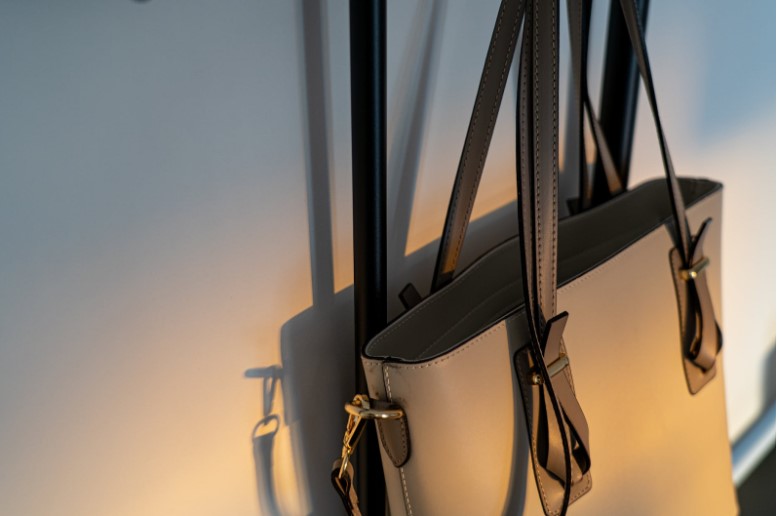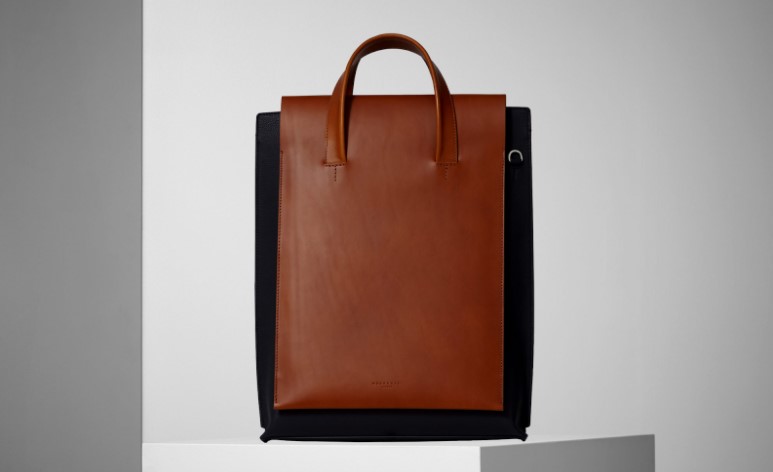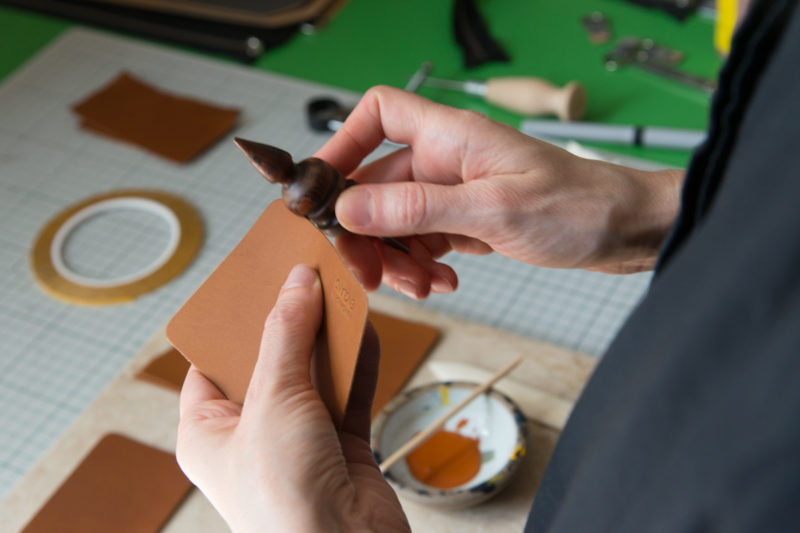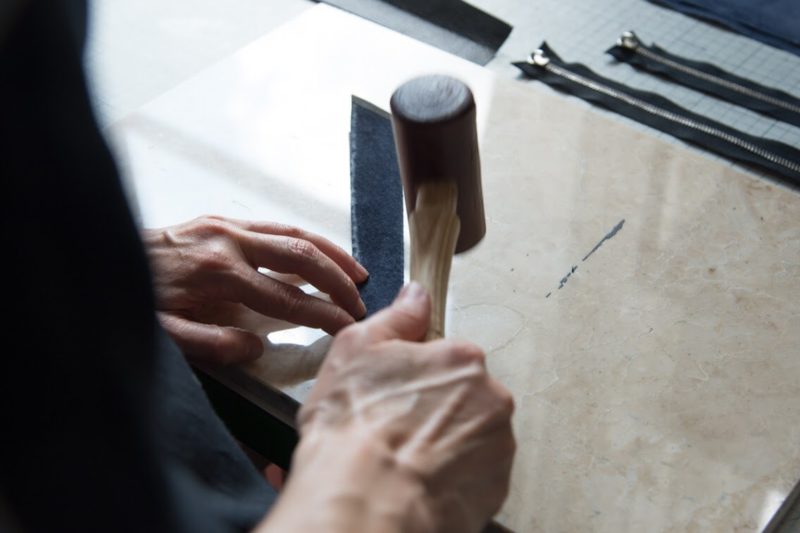Five Tips On Recognising Genuine Leather From Fake Leather
Genuine leather accessories and fashion items are sophisticated, well-crafted and, of course, pricey. When purchasing genuine leather, you’re making an investment, so it’s vital to know how to recognise genuine leather from faux leather when buying at a premium price.
Imagine the scenario – You’ve discovered an elegant looking leather handbag in a vintage boutique shop window. It looks wonderfully genuine from outside of the glass pane, tempting you to walk into the store to take a closer look. You promptly cross the threshold and ask the shop assistant to put the gorgeous leather handbag in your hand so that you can inspect it closer. And now the doubt sets in:
- Is it a genuine or fake leather handbag?
- Is it worth the price tag?
- Will it last the test of time?
It still looks good in your hands, but you’re unsure of whether the handbag is, in fact, genuine leather. Unsurprisingly you don’t want to splurge your good money on a fake leather bag. It would be as disappointing as if you were told it is genuine leather, only to find out it is fake when you get home. So how do you know if the bag in your hands is indeed a genuine leather bag and not a close imitation of the real thing? Here are some tips on differentiating real leather from fake leather.

First, we look at the different types of leather:
There are many types of leather, but generally, they can be sorted into the following groups, starting from the highest quality to the lowest graded:
- Full-Grain leather
- Top Grain leather
- Genuine leather
- Bonded leather
All of these are classed as genuine leather even though they vary in quality.
Some tips on inspecting leather items to see if they are genuine or fake:
1) Check The Label Of The Leather Handbag Or Accessory
An excellent place to start when inspecting a leather item is on the label. Many genuine leather products include a label indicating that the product is genuine leather. Manufacturers are keen to show that their products are the real deal so the label should be present.
If the label says pleather, rexine, synthetic or man-made material (or words of similar effect) you know it is, in fact, fake leather.

What if the label of your handbag says ‘100% real leather’? Do you then take their word for it? It’s a good idea to have some knowledge about distinguishing the different types of leather available.
Pricing plays a point in distinguishing the two. A product made of real leather will be quite expensive, and they usually sell at fixed prices. There are also different types of genuine leather with different prices, cow leather price is the highest due to its durability and easy tanning property. Semi leather and split leather, which is an under-layer split from the surface layer, is less expensive than top grain leather.
If relying on a label alone is too risky for you, the rest of the tips can help you determine how real it really is.
2) Smell The Leather Handbag

It may feel unnatural to stand in a shop smelling a handbag or purse, but leather items have a distinct smell and can be used as a significant indicator of it being genuine. Real leather has a particularly strong and somewhat intoxicatingly gorgeous smell that cannot be replicated by synthetic leather. Try smelling leather items you’ve already purchased, so you know the scent well, and then you can easily differentiate based on only taking a whiff.
3) Feel The Leather Bag And Turn It Over In Your Hands
Run your fingers and palm over the bag’s outer surface. Fake leather is often very smooth. Real leather can come in changing degrees of roughness or smoothness, but as it comes from hides, it is always a little bumpy, somewhat irregular yet enjoyably warm to touch, similar to touching skin. For the best quality of leather, such as full-grain cowhide, you’ll find that it has a smooth buttery sheen and is very luxurious to touch. Real leather is so above the fake on merely touching it, that once you have used and felt the genuine article, you will notice fake ones a mile off.
4) Real Leather Is Stretchable
Real leather is flexible and stretches in both directions. Stretch the leather material of the bag, and you will see the grainy patterns fade and come back when you release the material. You might also want to slightly dig a fingernail over it because if it is real, the leather will wrinkle slightly and then regain its original form. Fake leather will not be affected by a small scratch and will remain intact. Then take a look at the seams and see how two cut edges are coming together. Fake leather tends to be thinner on the edges or might feel almost plastic on the seam. Whereas real leather will have rough and grainy seams. Plus, the needle holes in real leather are uneven due to the leather being able to stretch, and fake leather needle holes will all be uniform and neat. Real leather has imperfections which count towards building character.
5) Look at the pattern of the leather material

One obvious sign that the leather is real is to look at the pores – do they seem to be too uniform? If so, then it will most likely be a fake because manufactured leather often has a consistent pattern. With real leather, you’ll find that it has uneven pores and inconsistent design. It’s known for its semi-random surface structure and unevenly spread pores that add character and personality to items as you use them. You might even decide that the monotonous pattern of fake leather is uninteresting. Investing in a timeless leather accessory will be worth the price tag because you will find that it builds character over the years of usage.
Something you wouldn’t try in the shops, but useful to know: Flame and saliva tests help you distinguish between fake leather and real leather
Needless to say, we do not recommend that you try this in the shops or at home. It’s useful to know if you are a part of the leather industry. Since we are looking at the main ways to differentiate between fake and real leather, it’s good to know these two tests as well.
If you were to hold a flame close to real leather, it would resist burning for quite some time. After some time, if the flame is continuously applied, the natural leather will burn but without it catching fire and will let off a flesh burning type of smell. On the other hand, fake leather will catch fire in seconds, burn with a flame, bubble up and smell like burning plastic.
“So, what exactly is the saliva test?”
Well, if you use some spit on real leather, you’ll find that natural leather will absorb it, and fake leather will not. The saliva will stay on top of the artificial leather, almost as though it is waterproof.
To bring your innovations to life, using top quality real leather, contact CreateLab.
We can help bring your ideas into reality, refining leather accessories to the highest quality for your brand/business, from making a sample product to sourcing leather or assisting you with small and regular production runs. We have got you covered! Check out our services to find out more.
RELATED ARTICLES
A GUIDE TO LEATHER GRADES
FIVE TIPS ON RECOGNISING GENUINE LEATHER FROM FAKE LEATHER
WHY LEATHER MANUFACTURERS CARE WHEN SOURCING THEIR GOODS
A BRIEF HISTORY OF LONDON’S LEATHER INDUSTRY AND WHAT WE HAVE LEARNT FROM IT
LUXURIOUS LEATHER CHECKLIST: WHAT TO KNOW BEFORE YOU BUY
7 PLACES TO FIND QUALITY GENUINE LEATHER IN LONDON
8 BENEFITS OF MANUFACTURING YOUR LEATHER GOODS LOCALLY
HOW TO STORE YOUR LEATHER GOODS
USING VEGETABLE TANNED LEATHER IS A SUSTAINABLE OPTION IN PRODUCING LEATHER GOODS





